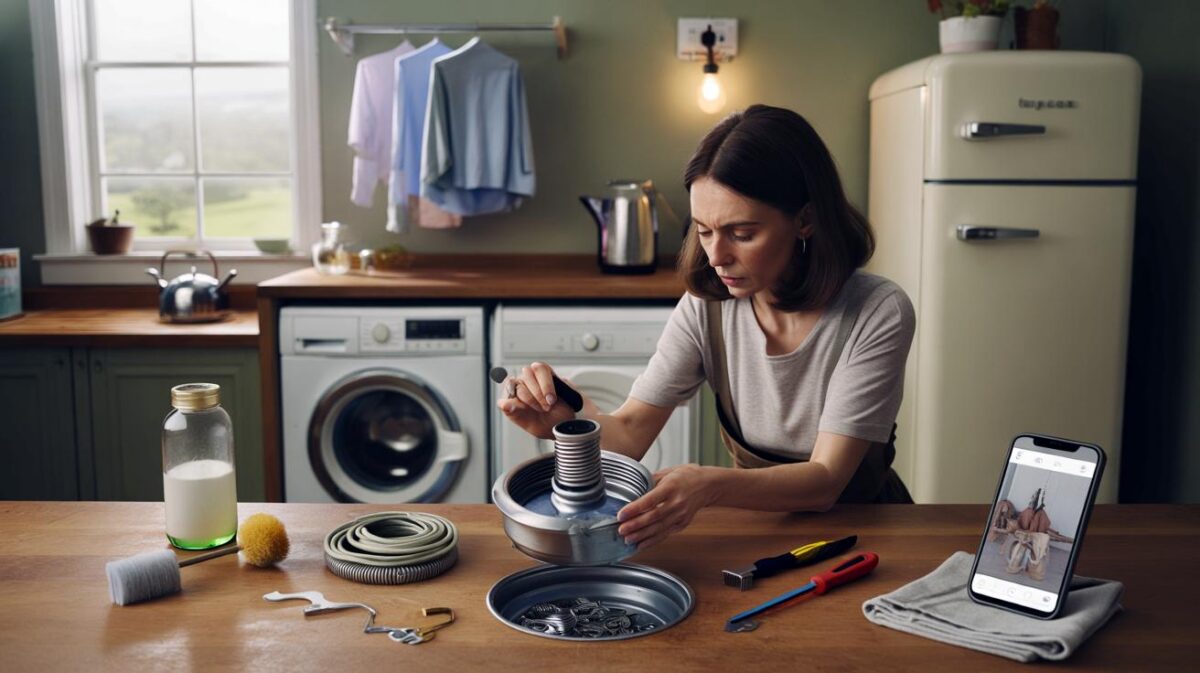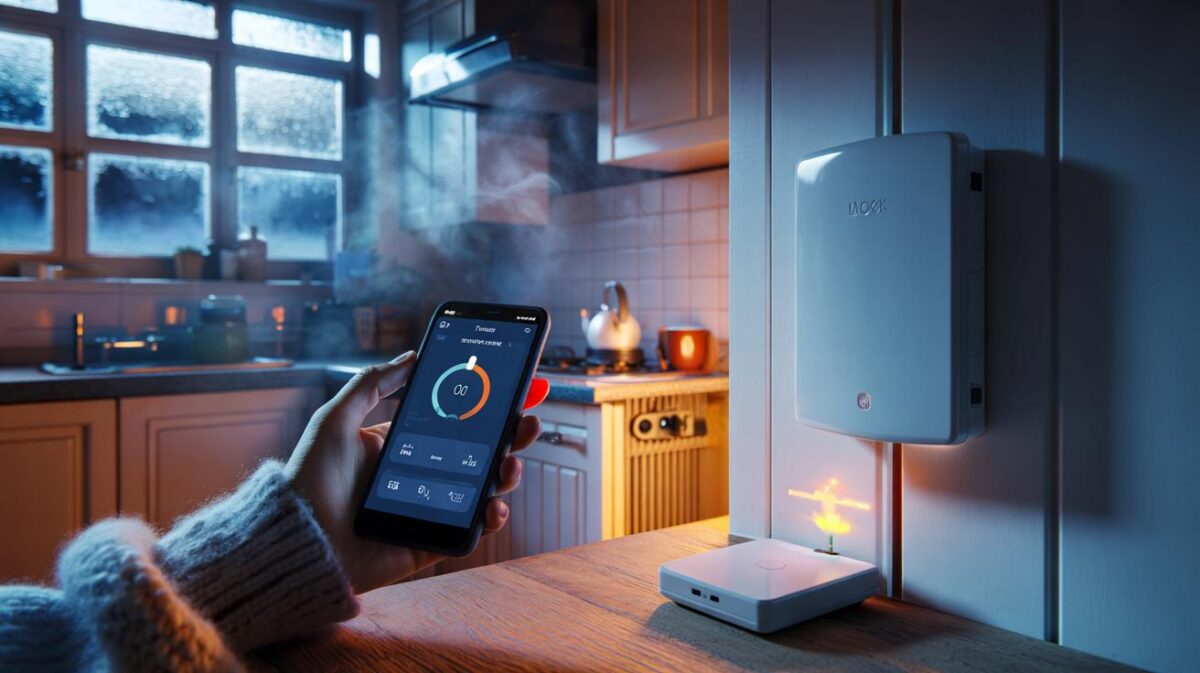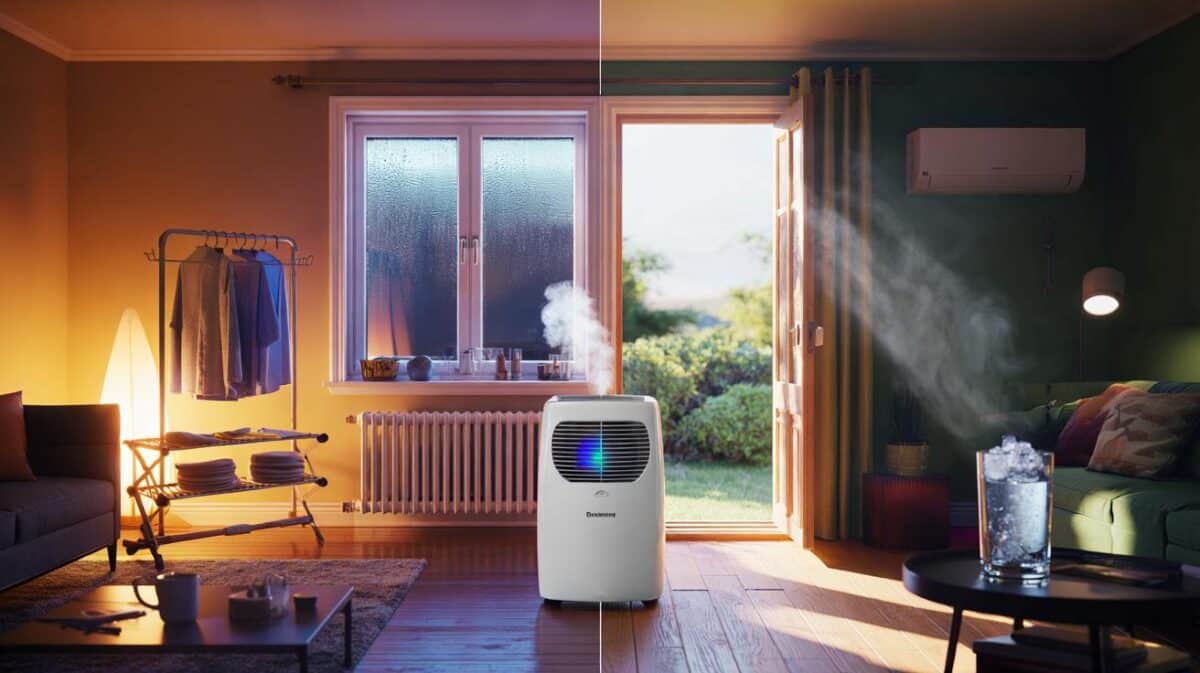It’s 7:42am in a British winter and your heating is politely burning pounds in a room no one will enter today. We’ve all had that moment when you pass a closed door and feel the tropical waft, while your toes cool on the kitchen tiles. The little dial on the radiator in there looks innocent, but it’s steering your bills, your comfort, and the mood of your home. The trick is tiny.
The small valve that quietly runs your heating
Walk into any UK home and you’ll find it near the skirting board: a knurled, numbered cap on the side of a radiator. That’s your TRV — thermostatic radiator valve — and it’s the local boss of that room’s warmth. Turn it and you’re not telling the boiler to roar; you’re telling a spring-loaded sensor to stop heating once the air nearby hits a set level.
In a terraced house in Leeds, I watched a family dial their living room TRV to 3, shut the door, and leave the hallway cooler on 1. Two hours later, the lounge sat at a steady 20°C, while the hallway hovered at 16°C without that draughty, wasteful tug through the stairwell. The boiler cycled gently. No drama. The Energy Saving Trust suggests trimming room temperatures by even 1°C can shave near 10% off space-heating costs. Room-by-room control is how you get there without shivering.
Here’s the simple physics. A TRV senses the air right around it, often with a wax capsule or liquid that expands as it warms, pushing a pin to choke the flow of hot water through the radiator. It doesn’t pace the boiler. It prevents a single room from overheating and turning your house into a patchwork of hot and cold zones. **A TRV doesn’t make your boiler work harder or faster; it simply stops a room overshooting.** That’s why placement matters: if the valve is hidden behind heavy curtains, it’ll think the room is warmer than it is and shut too soon.
Set each room like a pro — without faff
Try this once and you won’t go back. Pick an evening and set living spaces to 3–4 (roughly 19–21°C), bedrooms to 2 (about 17–18°C), the bathroom a touch higher if you like fluffy towels, and little-used rooms down at 1 or the snowflake. Shut doors and let the house breathe for a full day. Then adjust one click at a time the next day. **Start at mid-settings and walk the house once.** That’s your new winter habit.
Common traps are tiny and fixable. Don’t crank a TRV to 5 to “heat faster” — radiators don’t have gears, they’re on or throttled. Keep curtains and furniture from hugging the valve; it needs clear air to read the room. If a radiator stays cold while the boiler runs, the TRV pin might be stuck after summer — twist the head off and gently free the pin with a teaspoon handle. Bleed radiators if the top is cool. Let’s be honest: nobody actually does that every day. Do it once in October and forget it till spring.
This isn’t about shivering through January; it’s about control.
“Think of TRVs as local governors,” a veteran heating engineer told me. “They’re not speed pedals. They’re stop signs that say ‘warm enough now’ in each room.”
- Cheat sheet: 1 ≈ 12–15°C, 2 ≈ 16–18°C, 3 ≈ 19–21°C, 4 ≈ 22–24°C, 5 ≈ 24°C+; snowflake ≈ frost protect.
- Keep doors closed to rooms you’re cooling; leave the main thermostat room radiator fully open.
- Spare room? Don’t turn it off — set 1 or snowflake to avoid damp and chilly draughts.
- Bathrooms can sit at 3–4 for comfort, bedrooms at 2 for better sleep.
- Open-plan spaces often need similar TRV settings across all radiators to avoid one valve doing all the work.
The calm joy of not heating empty air
You start noticing tiny wins. The hallway no longer feels like an air current sucking warmth from the lounge. The boiler cycles less. The spare room is background-comfortable, not sauna-hot. **Lower numbers in quiet rooms, comfort where you live — that’s the win.** It nudges you into a room-by-room mindset that fits modern life: work shifts, kids’ bedtimes, late dinners, all of it. Share the settings with your household and let the little valves do what they were built to do. You’ll feel it in the air, and later, in the bill.
| Key points | Detail | Reader Interest |
|---|---|---|
| TRVs control room temperature, not boiler speed | They sense local air, throttle flow, and stop overshoot | Stops hot–cold swings and wasted heat |
| Set rooms by use, not habit | Living 3–4, bedrooms 2, spare rooms 1/snowflake | Comfort where it matters, savings where it doesn’t |
| Avoid common mistakes | Don’t blast to 5, keep valves clear, free stuck pins | Quick fixes that pay back through winter |
FAQ :
- What do the numbers on my TRV actually mean?They’re steps of target air temperature near the valve. As a guide: 1 ≈ 12–15°C, 2 ≈ 16–18°C, 3 ≈ 19–21°C, 4 ≈ 22–24°C, 5 ≈ 24°C+. The snowflake holds the room just above freezing.
- Should I turn off radiators in empty rooms?Better to set 1 or the snowflake. That limits heat loss, avoids damp and condensation, and reduces cold air pulling warmth from other rooms.
- Do TRVs save money with a combi boiler?Yes. By stopping rooms from overshooting, your system needs less heat overall. The boiler still runs, but for shorter periods because each room stops asking for heat earlier.
- What about the radiator in the room with my main thermostat?Keep that TRV fully open or set high. The wall thermostat should “see” real room temperature, not a starved radiator that tricks it into overfiring elsewhere.
- Are smart TRVs worth it?Handy if you want schedules and per-room control from your phone. They cost more upfront; payback depends on your routine, house size, and how much wasted heat you cut.








